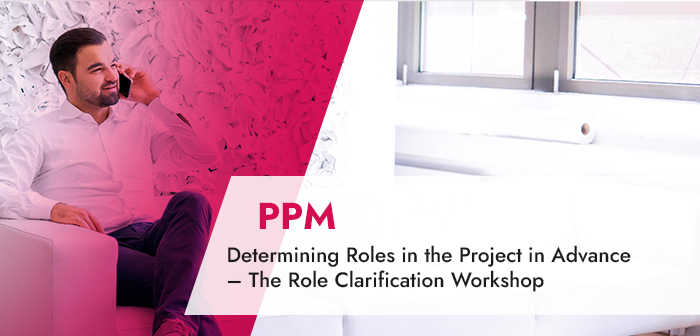Within organizations, titles, positions and official roles are meant to provide clarity. The problem with this is: in a multi-project environment, individual employees often work in changing functions. In this case, project roles and tasks change constantly. Furthermore, not all individuals are always familiar with all roles and responsibilities. Hence, it is important to clarify roles and responsibilities before the project start. In the below chapters, you will learn how to create maximum transparency as part of a role clarification workshop:
- Problems with unresolved roles in projects
- Workshop to clarify roles in the team: What is the goal?
- The best time for the role clarification workshop
- Who organizes the workshop and how long does it take?
- Facilitation – Key element of the workshop
- Typical agenda of a role clarification workshop
- Create transparency
- Conclusion: Role clarification workshop
- Recommended reading
Let us start.
Problems with Unresolved Roles in Projects
As a rule, project roles are clearly defined within organizations: For instance, there will be a project manager, Scrum Master or a development team. Based on the name of the role in the project, the tasks and responsibilities are also clear. So everything should work – at least in theory.
In practice, it is a little different in most cases. Experience has shown that the areas of responsibility of the participants are as individual as the individual projects. Thus, disagreements can arise quickly regarding the goal and expectations people have for their function / position / role.
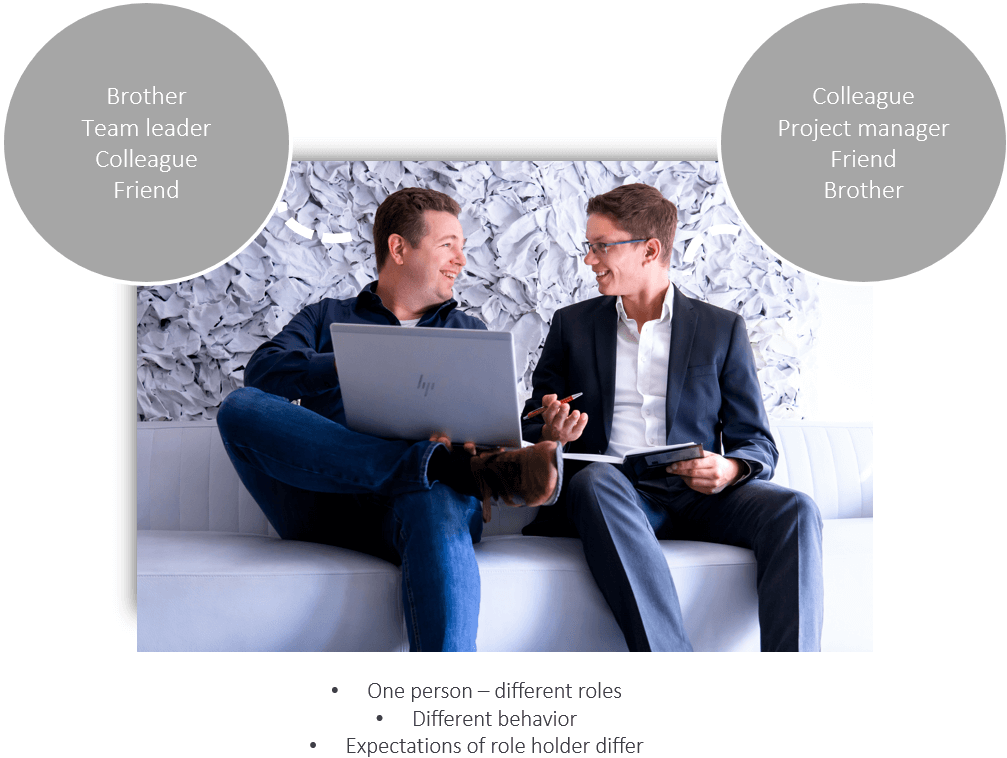
Another problem: Especially with larger projects, several different roles of various companies or customers tend to collide. At this point, at the latest, conflicts will arise – either in terms of agreements, allocation of tasks or communication. In most cases, the usual role definitions are unlikely to get you further.
Clarifying roles matters, as each role requires different resource planning software.
Therefore, create clarity for everyone right at the beginning of the project – everyone should know: what are my expectations of colleagues in the role of XYZ?
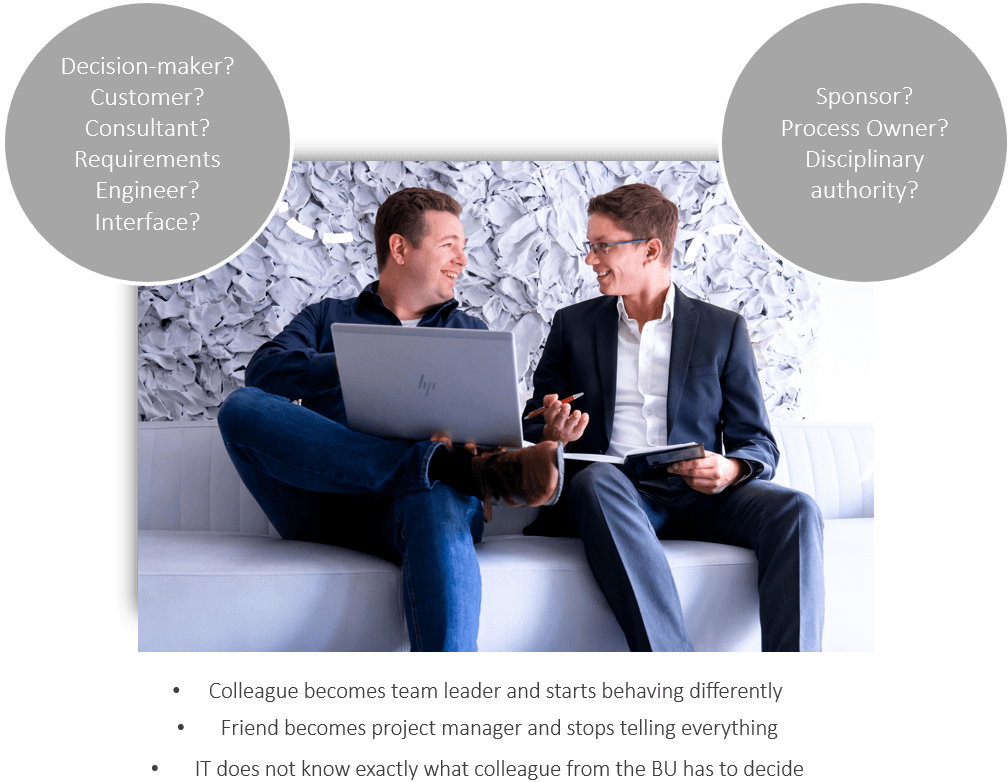
Example: You may have a profile in a social network, such as LinkedIn or Facebook. In this case, you will also be familiar with the brief description used to provide information about one’s job. It may be possible to give a rough outline of your profession, but your area of responsibility is certain to differ from people with the same job description. You may have certain expectations of a team member at the start of a project of which you are unaware.
Our tip: No matter which role you are in, never “just assume something.” Always check everything carefully and ask specific questions if anything is unclear.
Workshop to Clarify Roles in the Team: What Is the Goal?
The workshop to clarify roles in the team should resolve the following questions at the start of the project:
- Each team member knows what he or she is doing and what he or she is responsible for
- Everyone also knows this about everyone else on the team
- The team members know the expectations of others toward themselves in their function / role
In addition, other goals could be:
- Detecting overlaps
- Defining interfaces
- Identifying need for coordination
Our tip: Always bear the following core questions in mind: who does what, and what expectations do others have of me?
The Best Time for the Role Clarification Workshop
If the collaboration in your team is not working and conflicts, escalations and complaints are commonplace, a role clarification workshop can help you. Ideally, you would hold it right at the beginning of the collaboration in the new team. In case individual team members change, the workshop is also advisable.
Another helpful workshop at the beginning of a project is the Kick-Off Workshop.
Who Organizes the Workshop and How Long Does It Take?
This you now know already: it is best to organize a workshop to clarify roles at the very beginning of a project. That is why it is important to start planning in good time.
Depending on the number of participants, you should plan 90 minutes for the session. The time can also vary based on the initial situation and size of the project. Moreover, plan with several stages, especially if you are carrying out the role clarification virtually.
Now, you also need a suitable location which has room for all participants. Then, equipped with a flip chart or similar and a presentation case, you can get started.
You can either organize a role clarification workshop on your own, or you can call on professional external support. You will find more information on this at the end of the article.
The key is whether someone on your team could take on the role of the facilitator. Learn more about their role and task in the next section.
Facilitation – Key Element of the Workshop
In the joint meetings, the facilitator definitely takes on the most important task. He or she must succeed in building trust within the group so that people will gradually open up. In a moment, you will learn more on why an honest exchange within the team is the basis for successful role clarification.
Often, the project manager is the most suitable person to take on the facilitation due to their experience in the field. Depending on the order, the team and the project, you can also fill the role with an external expert. This must be decided individually, subject to the project, especially when there are conflicts or the project manager is also involved in the project as an expert. However, a certain amount of experience in the area of facilitation is indispensable.
In addition, the person must have an understanding of how a project team interacts and what the challenges are. In individual and group talks, trust can be built gradually. This lays the foundation for all other points.
Typical Agenda of a Role Clarification Workshop
In this article, we follow the classic example in which two workshop sessions take place at the beginning of the project.
- Workshop Part 1: Clarifying roles and responsibilities in the project
- Workshop Part 2: Clarifying expectations and rules of the game
In the run-up to the workshop, it is necessary to define who will be the facilitator and what the goal of the workshop should be. The workshop should definitely be pre-announced. Do not forget to briefly explain why the joint session takes place.
This is what your agenda could look like:
- Introduction (welcome, agenda, round of introductions if necessary)
- Goal and expectations (of the workshop)
- Responsibilities and roles in the project
- Expectations (of each other, of the collaboration)
- Conclusion
Workshop Part 1: Clarifying Responsibilities and Roles in the Project
In the first part of the workshop, the responsibilities and roles in the project will be determined. The point is to learn the position and areas of responsibility of each team member in the planned project. So everyone will introduce themselves to the group briefly with a few sentences. The facilitator takes down the information for all to see (e.g., on a flip chart).
This is when you will begin to see the first interfaces among several people. Where do you see overlaps? Are there instances in which it is not quite clear who is involved and how exactly? Or are there remaining areas unassigned to anybody?
The facilitator now has to create transparency – this will take until all questions and ambiguities regarding their role, interfaces and tasks have been resolved for all participants. All items of the discussions are visually recorded by the facilitator for everyone.
Use the following questions as a guide during the first part of the workshop to clarify roles:
- What are my tasks in the project?
- Which tasks do my team members have?
- Who are my contacts?
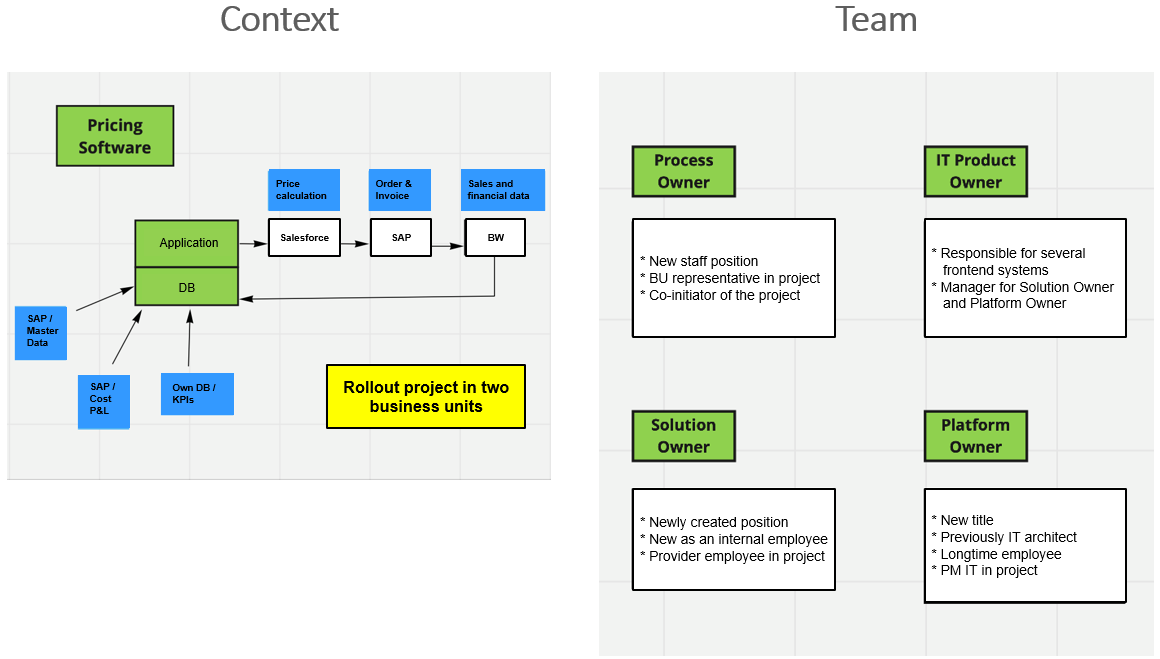
Our tip: If items are unclear, always ask for clarification. The goal of the workshop is to completely remove all ambiguities.
Workshop Part 2: Expectations and Rules of the Game
In the second workshop session, you clarify the expectations and rules of the game. First, it is worth taking a look at the common interfaces which were identified in the previous meeting. Problems in project handling usually arise from gears not meshing optimally in this respect. Now is the time to resolve the following questions:
- What expectations do I have of other team members or do other team members have of me?
- How do we want to deal with each other? (Rules of the game)
- etc.
Our tip: No question is too banal. Take this proverb to heart: “Better to ask the way than go astray.”
Summarize the results at the end of the role clarification workshop. Do not forget to send them to all participants by e-mail.
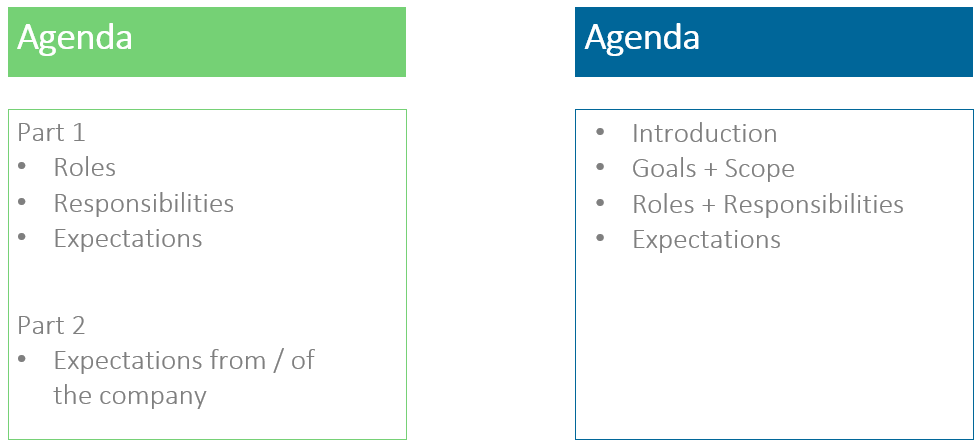
Create Transparency
The task of the facilitator is to first identify all roles in the project on a theoretical level. Despite this, there may still be friction at the beginning of a project. This will need to be resolved in personal and group discussions.
In the workshops, it should become clear to everyone thanks to concrete examples what the practical implementation will look like.
Our tip: Ask the facilitator specific questions: what does that mean precisely?
It may be that one or two do not want to admit that tasks are not clear, support is needed or even skills are insufficient. For optimal role clarification, however, transparency is key.
Therefore, build trust in the team from the start by giving every person the space to ask questions and get answers without prejudice. Building an honest relationship with each other is bound to take longer than two workshop sessions. All the more because it is not uncommon for people to meet here who are complete strangers to each other. Yet, the role clarification workshop can provide the basis on which you can build further.
Conclusion – Role Clarification Workshop
A role clarification workshop can help you remove conflicts and improve coordination among your team. Especially at the beginning of a new project, it creates clarity and transparency regarding the role of each individual and thus removes troublesome obstacles.
Recommended Reading
As the author originally wrote this article in German, the reference material listed below is also in this language. We would also like to draw your attention to TPG’s German-language podcast episode on the same topic.
- Barbara Langmaack „Einführung in die Themenzentrierte Interaktion TZI“
- Barbara Langmaack, Michael Braune-Kricke „Wie die Gruppe laufen lernt“
- Michéle Neuland „Neuland-Moderation“
- Angelika Collisi „Workshop Rollenklärung – Leitfaden für Planung und Moderation“
Angelika Collisi also has her own English-language blog.
Our final tips
Get to know the individually adaptable “PPM Paradise” – the optimal environment for your enterprise-wide project, program, portfolio and resource management (PPM). Download the free eBook “The PPM Paradise” now (just click, no form).
And sign up for our bi-weekly blog newsletter with information on more practical articles, eBooks, etc. to improve your project management maturity level.
Would you like to deepen your knowledge and ask questions? Get in touch with guest author Angelika Collisi via office@pampiloxa.com.
Any questions about the role clarification workshop? Do you think it can boost project success? Please leave a comment below.
Subscribe to TPG BlogInfo: Never miss new practice-oriented tips & tricks
Every other week: Receive practical tips in TPG blog posts written by recognized experts in project, portfolio, and resource management.
* Required Fields | Data Protection
 Angelika Collisi
Angelika Collisi
Psychologist M.A., PMP, CBAP, PSM
For more than 15 years, Angelika Collisi has been supporting her customers in ambitious projects ranging from SAP implementations to global pricing software roll-outs, from fast-growing tech start-ups to nationwide telemedicine projects. She is a certified trainer, a project manager and a business analyst, and she holds a lectureship for social psychology at the Hamburger Fern-Hochschule University of Applied Sciences. She has been managing partner of Pampiloxa GmbH since 2016.
More on Angelika Collisi on Linkedin.
 Anna Pauels
Anna Pauels
Content Marketing Professional
Anna Pauels has worked as a journalist and photographer for the TV stations ARD and ProSieben, as well as newspapers such as Münchner Merkur and tz, and numerous lifestyle magazines. Today, Anna Pauels is a Content Marketing Professional at TPG The Project Group, managing the German and French versions of the blog as well as the social media channels and the monthly newsletter.


